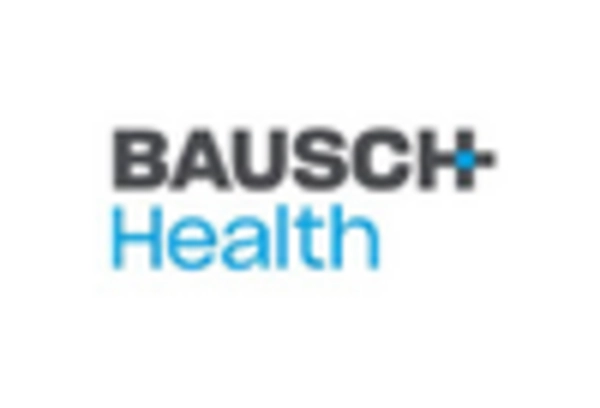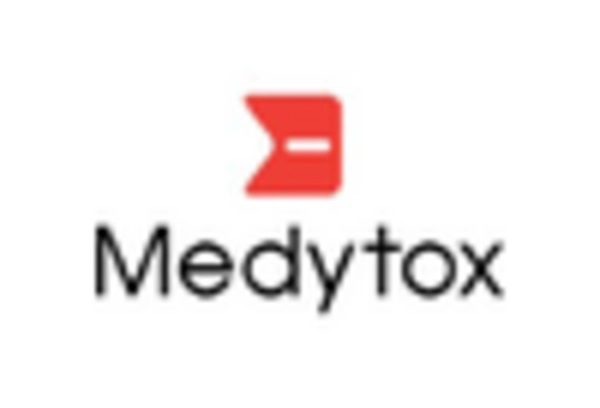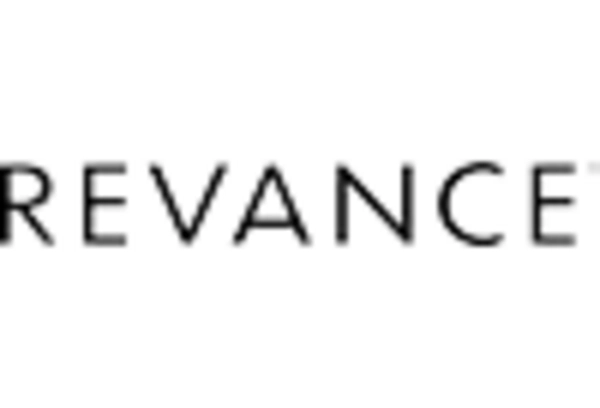Growing Mental Health Awareness
The growing awareness of mental health issues related to gynecomastia is a crucial driver for the Gynecomastia Treatment Market. Many individuals suffering from gynecomastia experience psychological distress, including anxiety and depression, due to societal pressures and body image concerns. As mental health awareness increases, more individuals are likely to seek treatment not only for physical symptoms but also for psychological relief. This trend is supported by various studies indicating that addressing mental health can significantly improve treatment outcomes. Consequently, healthcare providers are increasingly focusing on holistic treatment approaches that encompass both physical and mental health, potentially leading to a surge in demand for gynecomastia treatments.
Increasing Prevalence of Gynecomastia
The rising prevalence of gynecomastia is a notable driver for the Gynecomastia Treatment Market. Studies indicate that approximately 30% of males may experience some form of gynecomastia during their lifetime. This condition can arise from hormonal imbalances, certain medications, or underlying health issues. As awareness grows regarding the condition, more individuals are seeking treatment options. The increasing number of patients seeking medical advice is likely to propel the demand for gynecomastia treatments, thereby expanding the market. Furthermore, the growing recognition of gynecomastia as a legitimate health concern encourages healthcare providers to offer more comprehensive treatment plans, which could further stimulate market growth.
Rising Demand for Aesthetic Procedures
The rising demand for aesthetic procedures is a prominent driver for the Gynecomastia Treatment Market. As societal norms evolve, there is a growing acceptance of cosmetic surgery among men. This shift in perception has led to an increase in the number of males seeking surgical interventions for gynecomastia. According to recent data, the male cosmetic surgery market has seen a substantial rise, with gynecomastia surgery being one of the most requested procedures. This trend is likely to continue as more men prioritize their appearance and self-esteem. The increasing availability of aesthetic treatment options further supports this demand, making it a significant factor in the growth of the gynecomastia treatment market.
Technological Advancements in Treatment
Technological advancements in treatment options are significantly influencing the Gynecomastia Treatment Market. Innovations such as minimally invasive surgical techniques and advanced liposuction methods have transformed the landscape of gynecomastia treatment. These advancements not only enhance patient outcomes but also reduce recovery times, making procedures more appealing to potential patients. The introduction of new pharmaceuticals and hormonal therapies also contributes to the market's expansion. As these technologies continue to evolve, they are likely to attract a broader patient demographic, thus increasing the overall market size. The integration of technology in treatment protocols may also lead to improved patient satisfaction and adherence to treatment plans.
Influence of Social Media and Celebrity Culture
The influence of social media and celebrity culture is shaping the Gynecomastia Treatment Market in profound ways. Platforms such as Instagram and TikTok have created a space where body image and aesthetics are heavily discussed and promoted. As celebrities openly share their experiences with body image issues, including gynecomastia, it encourages others to seek treatment. This visibility can lead to increased awareness and acceptance of gynecomastia as a condition that warrants medical attention. Consequently, the demand for treatment options is likely to rise as more individuals feel empowered to address their concerns. The interplay between social media trends and healthcare choices is expected to continue influencing the market dynamics.


















Leave a Comment